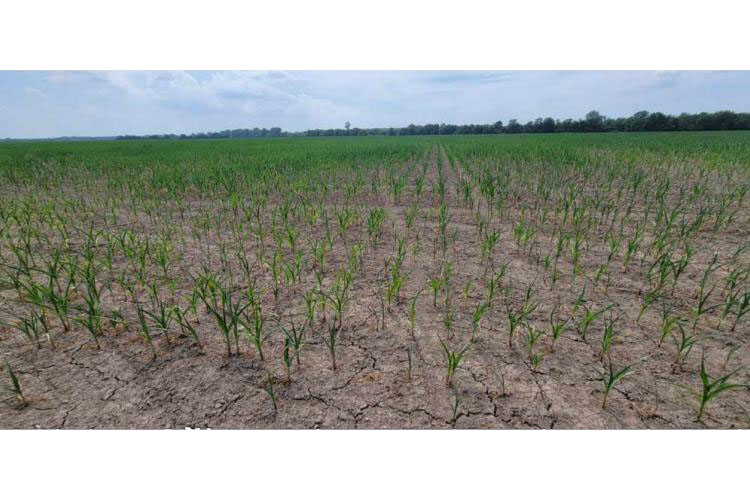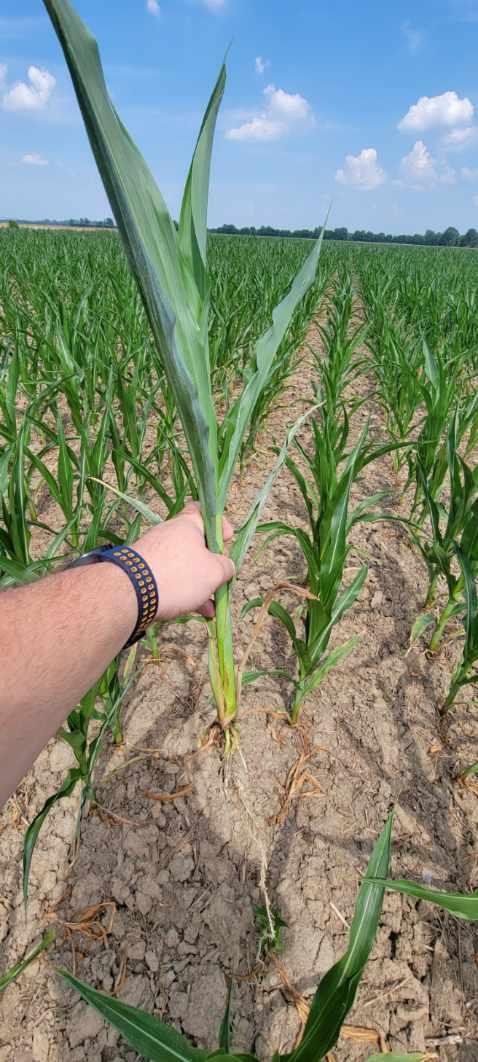Drought-weary Kentucky farmers need a soaker
Drought-weary Kentucky farmers need a soaker


It’s a dry, hot summer in Kentucky with no significant precipitation on the horizon. The state’s corn growers can’t afford to wait for rain; they need it now. Currently about half of the state is in moderate drought, according to the U.S. Drought Monitor’s July 8 report. Another quarter of the state is abnormally dry.
“The state’s corn crop suggests that the drought severity is underestimated,” said Chad Lee, director of the University of Kentucky Grain and Forage Center of Excellence in Princeton. “Much of the crop has reached or is reaching tasseling stage. This is a time when the crop demands adequate water. This growth stage is when the plant is most sensitive to a lack of water.”
In Fulton County, UK Cooperative Extension agent for agriculture and natural resources Ben Rudy has spent a lot of time driving around the county and surveying the crop conditions. He said farmers there didn’t plant as much corn acreage this year due to high input costs, but there is still a lot of corn, and it all needs a big rain.

Corn in Fulton County is suffering. Photo by Ben Rudy, UK Cooperative Extension agent for agriculture and natural resources in Fulton County.
“We have parts of the county that have been without any rain for a month or more,” he said. “I drove to Murray and noticed that two-thirds of the corn along highway 94 is tasseling and the rest will probably hit that stage this week. Even the double-cropped soybeans are struggling. When the beans start to look bad, you know it’s really dry.”
Lee said soybeans don’t demand as much water as corn, and they can set many flowers and pods, so they have a good chance to weather a dry period.
“Soybeans are not at a critical point like corn,” he added. “However, Kentucky led the United States in crop decline over the first full week of July. That’s not an area where we want to be in first place.”
Corn growers have a big investment in their crop every year, but this year may be more than others due to high input prices and instability in the global grain trade due to the conflict in Ukraine. Lee said a drought is never good for corn growers, but with all the factors at play, this year is perhaps the worst to experience a drought.
“Some good, soaking rains in the next couple of weeks would really turn the situation around and preserve the potential to have at least break-even yields,” Lee said. “If we don’t get those rains, we’ll see yield potential drop. Even an inch of rain, soaking into the soil in the next week, would really help.”
UK College of Agriculture, Food and Environment meteorologist Matt Dixon said the 2022 drought is different from the 2012 drought because of dew point temperatures, which indicate the amount of moisture in the air. In 2012, dew point temperatures were in the 50s and 60s, leading to tolerable humidity, but higher rates of evapotranspiration. This year, they are in the 70s and sometimes even touching 80.
“On July 7, the Todd County Mesonet station recorded a temperature of 101 degrees,” Dixon said. “Combined with a dewpoint of near 80, the heat index hit 121, leading to very oppressive heat.”
He said current conditions are creating what they call a negative feedback cycle.
“That means it’s more difficult to get precipitation in areas that are already so dry,” he added. “Unfortunately, the forecast doesn’t paint a great picture for those hardest hit areas across the western half of the state. Hopefully that changes sooner rather than later and will amount to some replenishing rainfall.”
Crops Environment Sustainability Weather

